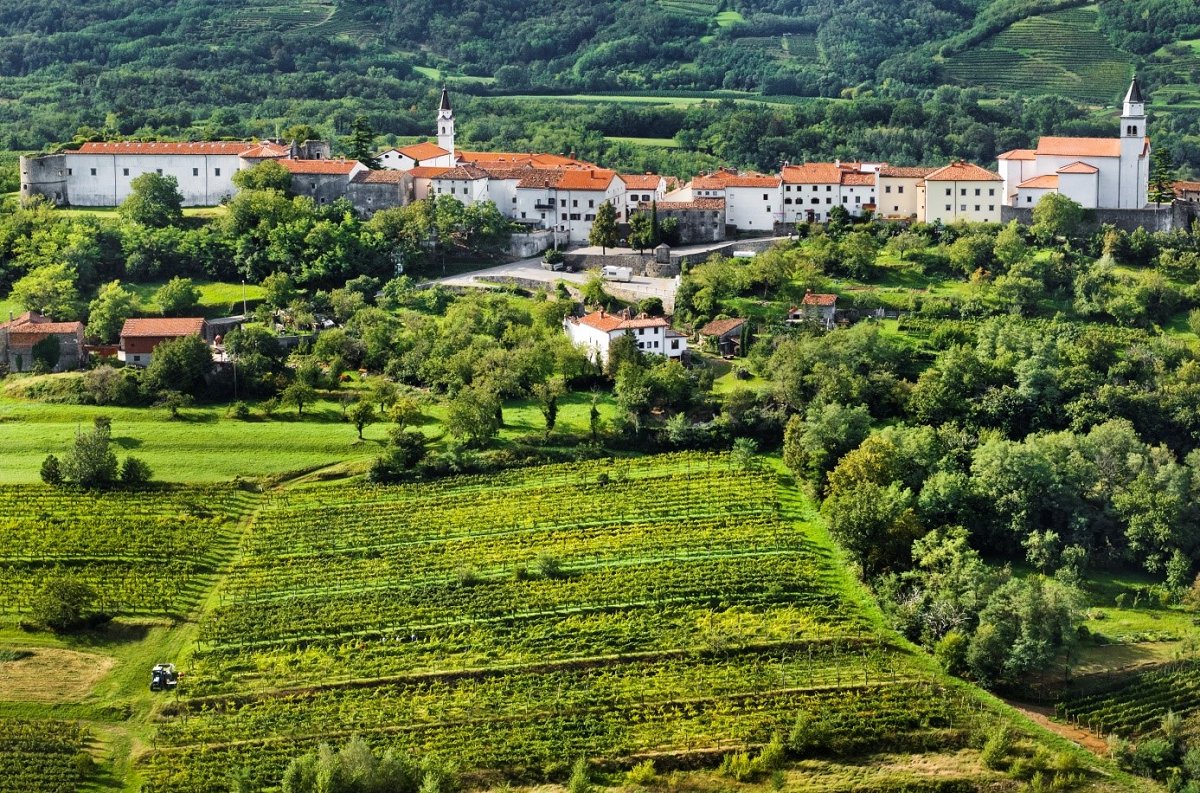Vipavski križ
Vipavski Križ is a small, picturesque, fortified settlement in the Vipava Valley, and one of the most striking historic and cultural sites in Slovenia. The first written accounts date back to the 13th century when it was mentioned as De Cruce or Villa Crucis. The town is divided in quarters with straightforward names Gase (alleys), Plac (square) and Grad (castle). Gase is the oldest part of the town and features small single- and two-storey buildings of a similar design. This was where the craftsmen and tradesmen lived. Meanwhile, the wealthiest residents built their homes around the square (Plac). Thus, the generously planned square is enclosed by two lines of luxurious houses. The wealthy quarter was completely separated from the old part – the alleyways of Gase. The castle with four towers was commissioned by Leonhard, the last Count of Gorizia, for protection against the Turkish invaders, and was fortified soon after. Its importance grew quickly.
In 1532 Vipavski Križ was granted town privileges, making history as the smallest town in the Habsburg Monarchy. It was protected by the Guard of Križ that was in operation until 1915. Apart from the magnificent castle wall, Vipavski Križ is most notable for the Capuchin Monastery with its rich library, and the monastic cell of distinguished preacher John Baptist of Sveti Križ (Janez Svetokriški).












